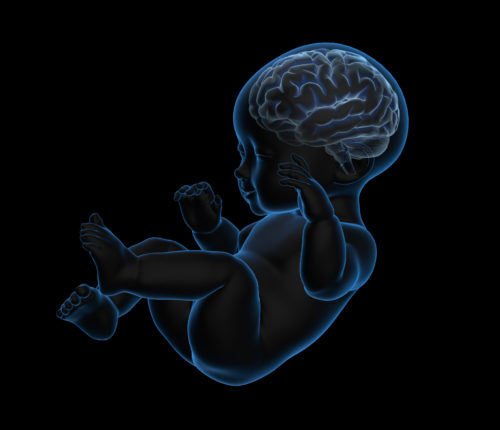
Two New Treatments for HIE Show Promise
Researchers believe that two new treatment options for babies with hypoxic ischemic encephalopathy (HIE) may be promising. Currently, hypothermia treatment, or cooling therapy, is the only medically accepted treatment for HIE. Now, however, researchers are investigating the potential that CBD oil and peptide inhibitors could help protect the brain and prevent infant brain damage caused by a lack of oxygen during labor and delivery.
In today’s post, we will review HIE, meaning a review of current treatment methods and the methods that researchers hope will change the way that doctors manage babies with HIE.
What is Hypoxic Ischemic Encephalopathy?
Hypoxic Ischemic Encephalopathy (HIE) is a type of infant brain damage caused by a lack of oxygen during birth. The word “hypoxic” refers to a lack of oxygen to the brain. “Ischemic” refers to a reduction in blood flow to the brain. And “encephalopathy” refers to the condition being a brain disorder.
There are several events that may cause an infant to be deprived of oxygen during labor and delivery. Some of the more common events include:
- Umbilical cord collapse or compression
- Placental abruption
- Uterine rupture
- Preeclampsia
- Placental insufficiency
- Fetal anemia
- Congenital infections
- Maternal diabetes or vascular disease
- Prolonged labor
- Abnormal fetal position
No matter what the cause of HIE is, what is most important is that doctors work quickly to prevent additional brain damage.
Current Treatment for Hypoxic Ischemic Encephalopathy
Currently, there is only one medically accepted treatment method for HIE. That is neonatal therapeutic hypothermia, or brain cooling, therapy. This method of treatment involves the infant being placed on a cooling blanket for a period of 72 hours. During this time, the infant’s body temperature is carefully lowered to as low as 91.4 degrees.
Cooling the brain helps slow down brain processes that initiate when there is a lack of oxygen or blood supply. This cooling therapy can prevent new damage and reduce the impact of damage already done to the brain. In order to be most effective, hypothermia treatment must begin within hours of diagnosing HIE.
Two Promising Treatment Options for Hypoxic Ischemic Encephalopathy
With estimates suggesting that 20 out of every 1,000 babies born suffer from oxygen deprivation at birth and/or HIE, researchers are reasonably searching for more treatment options. Two treatment options currently being tested show promise – Cannabidiol (CBD) and peptide inhibitors.
Cannabidiol for HIE
Cannabidiol, or CBD oil, has the ability to protect the brain and relieve symptoms associated with certain types of brain disorders. CBD reduces inflammation in the brain, minimizes damage caused by oxidative stress and reduces glutamate-related excitotoxicity, which is thought to be a major cause of brain damage.
In research, CBD oil has helped control or reduce the severity of symptoms related to epilepsy, multiple sclerosis (MS), Parkinson’s disease, Alzheimer’s disease and more.
Even though early studies on CBD oil were promising, researchers found it difficult to conduct clinical studies on babies. There are a lot of misconceptions about CBD oil because it is often associated with recreational cannabis. For that reason, researchers have to provide more evidence of safety and efficacy for CBD treatments.
Now, researchers have received approval for a clinical trial of CBD as a treatment for infants with HIE. The recent approval is largely due to the results of a study on pigs. In that study, CBD offered neuroprotection on its own, but when combined with hypothermia treatment, the results were staggering. One researcher reports,
“When we used them together [CBD and hypothermia treatment], they were reducing brain damage by almost 100%.”
Certainly reason enough to continue investigating whether CBD oil could improve outcomes in babies with HIE. The clinical trial will take place in the United Kingdom and Spain. It is backed by GW Pharmaceuticals.
Peptide Inhibitors for HIE
Peptide inhibitors are under investigation as a possible means of protecting the brain from an injurious inflammatory cascade effect that occurs after oxygen deprivation. PIC1 (Peptide Inhibitor of complement C1P1) has the potential to protect the brain by halting the inflammatory cascade.
Experiments done on rats show that PIC1 significantly reduces neuronal injury and brain infarct volumes. The effect of PIC1 is outside what current anti-inflammatory drugs can do to protect the brain and prevent damage. Research into PIC1 for neonatal HIE use is ongoing.
Significance of New Treatments for Hypoxic Ischemic Encephalopathy
The brain damage caused by HIE can effect infants in various ways. Some infants experience only short-term deficits, while others are permanently disabled. In some cases, the brain damage is even so severe that the infant dies. Researchers estimate that the mortality rate among infants with HIE is around 60%. Also, around 25% of the infants who survive HIE suffer significant disabilities.
The goal of researchers now is to examine whether these two promising treatment methods can improve outcomes in infants with HIE. Not only reducing the amount of brain damage, but also helping to improve clinical practices related to HIE.

